How to Identify Authentic Jianzhan Tea Bowls
Jianzhan, the legendary Tenmoku tea bowl from Song dynasty China, is revered for its mysterious glaze patterns and unique kiln effects. With the market growing and imitation techniques evolving, knowing how to distinguish an authentic Jianzhan has become essential for collectors and tea enthusiasts alike. This guide provides a comprehensive breakdown of identification techniques based on shape, glaze, clay body, and firing method.

1. Shape Identification: Traditional Forms Still Matter
Classic Jianzhan shapes include constricted mouth, slightly flared, wide-rimmed, and turned-back lips. Modern variants may take on bowl, chalice, or cup-like forms, but authentic Jianzhan typically adhere to these Song-era standards due to the technical difficulty of shaping and firing the material. Perfect symmetry is rare due to high-temperature shrinkage and kiln variation.
Beware: Some sellers intentionally market defective or asymmetrical bowls as rustic or “hand-fired” charm. While kiln firing does produce organic variation, deliberate flaws should not be confused with the true technical limitations of traditional Jianzhan.

2. Glaze Pattern Identification: Nature’s Fingerprint
Jianzhan glazes are made from natural ore-rich slips mixed with botanical ash. The most iconic patterns—hare’s fur, oil-spot, and yohen (曜変)—are formed through crystallization during reduction firing. These are inherently random and unrepeatable.
Modern chemical glazes often mimic these colors but exhibit uniformity and repetition, lacking depth and variation. Their vividness may seem attractive but often come at the cost of authenticity and safety.
Collectors should seek:
-
Organic asymmetry in glaze streaks
-
Natural luster, not plastic-like shine
-
Color transitions within glaze boundaries
“One glaze, a thousand colors”—that’s the heart of real Jianzhan.

3. Functional Identification: The Tea Test
Jianzhan interacts with tea. Pouring different teas (especially dark oolongs) into the bowl reveals different light refractions and hue contrasts. Over time, tea oils react with the glaze’s iron content, creating a rainbow-like patina known as “tea rainbow.”
This patina or iridescence is a hallmark of authentic iron-rich Jianzhan glaze with microscopic pore structures and an absorption rate between 1.2%–5%.

4. Clay Body Identification: Reading the Core Material
Jianzhan bodies are made from mixed clays—red loam, yellow clay, iron-rich soil—aged for a year before shaping. The two main types are:
-
White Body: Rare and less dense
-
Iron Body: Dark gray-black cross section, high iron content, dense and heavy
Quartz and feldspar are intentionally added to improve firing stability and heat resistance. You may spot small white crystals at the bottom—these are quartz particles used to reduce bubbling. Under polarized light, the presence of mullite, hematite, or magnetite microcrystals can be confirmed.


5. Glaze Material Identification: A Technical Breakdown
Authentic Jianzhan glaze includes:
-
Base Material: Iron-rich quartz/feldspar slips
-
Colorant: Primarily iron oxides; sometimes cobalt for blue hues
-
Flux: Botanical ash (pine, bamboo, etc.) to lower melting point
These are processed into slurry, aged, and then applied using dipping or swirling methods. The glaze must be thick enough to form complex patterns yet not run excessively. If too thin, the bowl will turn dull; if too thick, it may peel or pool.
Natural ash also leaves behind wood-fired traces, contributing to oil-spot or streak effects.

6. Wood-Firing Marks and Crystal Variations
Jianzhan is traditionally reduction-fired in dragon kilns using pinewood. The kiln atmosphere (oxidizing vs. reducing), firing temperature (~1300–1350°C), and the location of the bowl in the kiln all affect the glaze outcome.
The unique marks include:
-
Kiln Tears (釉泪): Gravity-pulled glaze streaks
-
Oil Spot: Round crystal patches caused by slow cooling
-
Hare’s Fur: Fine, downward glaze streaks caused by low-viscosity glaze
-
Yohen: Rare crystalline burst effects in high-iron glaze
Electric kilns are now commonly used for consistency, but the magic of traditional Jianzhan still lies in the unpredictability of wood-firing.


Final Thoughts: Science Meets Art
Each authentic Jianzhan is a crystallized moment of fire, clay, and fate. While technology helps us understand the science—iron phase separation, liquid-glaze viscosity, mullite formation—it is the mystery, the unexpected, that defines its true charm.
For serious collectors or tea drinkers, a real Jianzhan is not just a tea bowl. It is a story fired into stone, a spiritual echo from Song dynasty kilns.

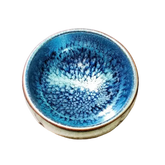


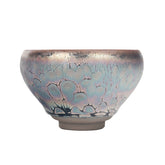
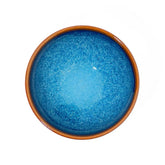
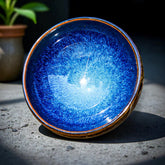
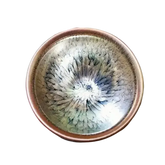
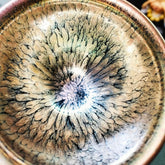
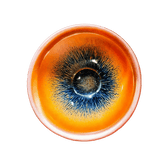

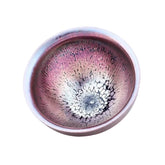


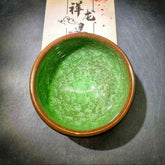
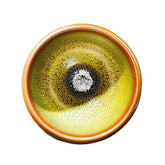
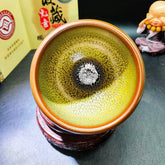
Leave a comment
Please note, comments need to be approved before they are published.